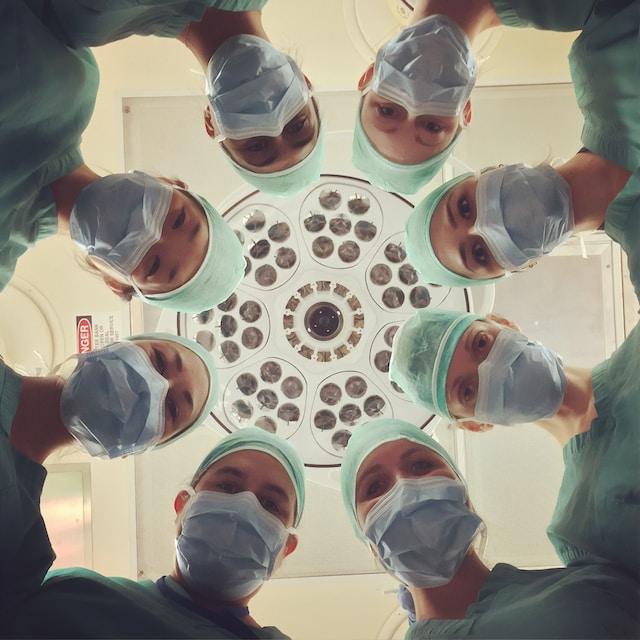UNITED STATES—We place our complete trust in the doctors and surgeons who’ve taken a sworn oath not to harm. Fortunately, when we reach out to them to make us better in some way, we usually go from bad to better.
Doctors and healthcare professionals usually take every precaution and do things by the letter of the law, but that’s not always the case. Most do their utmost to avoid medical errors, but unfortunately, they sometimes occur. Sunshine State residents that think they’ve been harmed by a neglectful doctor can contact Miami medical malpractice lawyers to learn what they can do to hold them accountable.
What Doctors Can Do To Prevent Medical Errors
Doctors have undergone rigorous and demanding training before they’ve earned the right to practice medicine. They’re the experts, yet they’re still human and prone to mistakes. It could be beneficial for patients to inquire with the Florida Department of Health if a doctor has any formal disciplinary write-ups before requesting an appointment with them.
Despite numerous medical malpractice payouts, some unscrupulous Florida doctors still practice medicine. Florida’s Medical Malpractice Three Strikes Rule was put in place to remove doctors with repeated negligence charges, but unfortunately, some still squeak through and continue to put patients at harm.
Most of Florida’s doctors and healthcare professionals have stellar records and perform their jobs flawlessly. These outstanding professionals usually follow these 5 unwritten rules of practice.
Writing Legibly
It’s been a long-standing joke that doctors have horrible handwriting. Fact or fiction, illegible writing on doctor’s notes, prescriptions, and other medical documents is a medical mistake waiting to happen. It’s far too easy for poorly written and unclear written orders to be misread, leading to dosing errors or worse.
The best doctors ensure that their writing is undeniably clear. Decimal points, crucial for the proper dosing of medication, are clear. Fortunately, in today’s world of technology, many doctors now use digital means of written communication.
Avoid Verbal Orders
Except in extreme emergencies when seconds can make or break a medical situation, verbal orders to other healthcare staff are to be avoided. It’s far too easy for verbal information to be misunderstood or forgotten. No matter how insignificant an order is, it should always be dutifully noted in written or electronic form.
Although verbal orders can save time, electronic medical records take little time and provide the most accurate patient medical history. To avoid medical mishaps due to a verbal communication misunderstanding, doctors and medical staff must keep an accurate written or digital timeline of all details about a patient and their condition. Verbal orders can easily lead to errors of omission.
Limit the Use of Abbreviations
Combined with writing orders, notes, and prescriptions clearly, doctors should limit the use of abbreviations. Poor handwriting or a finger slip when documenting something digitally can create an environment for mistakes and misunderstandings. Some doctors who still handwrite orders should avoid using the letter “U” when referring to units. It could easily be misconstrued as a zero. This could potentially have the patient prescribed a ten times too high dose.
Double Check Everything
Double-checking should be the norm with so many variables in a patient’s condition and their medical history. Human error and technology glitches are common, and sometimes a second look, or even better, a second pair of eyes, is all needed to catch something that’s been missed.
Some physicians may take offense to a nurse or other medical staff questioning their notes or diagnosis, but many a mistake can be caught by a well-meaning healthcare professional.
Ensure Medical Devices Are Calibrated
Technology is only as good as the device. If medical devices aren’t properly calibrated, the information they provide won’t be accurate. Inaccurate lab results or images can lead to errors in proper medical treatment.
Regarding medical devices, nothing should be assumed. If lab tests or images reveal unlikely results, they should be immediately questioned. Although medical testing facilities have protocols for timely calibrating equipment, frequent audits can ensure that procedures are being followed.
Medical Errors and Their Prevention: The Bottom Line
Most doctors and healthcare facilities follow all protocols and procedures properly, yet medical malpractice cases still happen, despite the high levels of competence in the current healthcare landscape. Patients place their faith in doctors whose sworn oath is to provide the best in medical care, but unfortunately, medical mistakes still happen. Our doctor’s responsible for ensuring that nothing goes wrong, and it can leave some patients feeling vulnerable.
If you feel you’ve not received the expected quality of care, you should consult with an experienced medical malpractice attorney. Injuries that result from medical negligence need to be addressed so they don’t continue, and you’re properly compensated for your negligent care.






